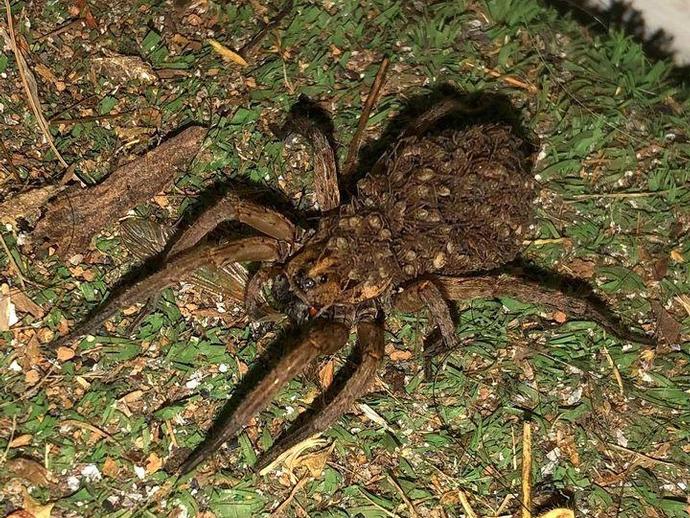May 28, 2021
Ben here with the Friday edition of #BenInNature presented by our friends at Carter Bank & Trust!
First things first, my apologies. I realize that for many folks out there, these two photos will inspire a reaction of, you know, visceral terror. But female wolf spiders are pretty cool, and I think it's time to pay tribute to these hard-working moms!
The first photo of the wolf spider with the egg sac was taken just a couple of weeks ago. When a female wolf spider lays eggs, she wraps them in a silk ball to protect them and attaches it to her spinnerets, which are the silk-producing organs on her abdomen. She'll carry this egg sac with her until the spiderlings emerge, and if she somehow loses it, she'll search until she finds it again.
The eggs will hatch in one to two weeks, and somewhere between a few days and a few weeks later, the mother spider will chew the sac open with her mouthparts so the babies can emerge. Within a few hours, all the baby spiders will crawl on mom's back, as seen in the second photo (which I took sometime last year). They'll ride around on her back for a few days or weeks (depending on the species) until they're big enough to hunt on their own.
I'll be the first to admit that as much as I love nature, wolf spiders sometimes give me the willies. However, these spiders mean us humans no harm, and they only bite if they feel agitated or trapped. Even if they do bite, the bite is not medically significant to humans. It's pretty medically significant to insects, however, which is what makes the wolf spider one of the apex predators of your backyard. If you don't like nuisance pests like cockroaches, it's best to just leave wolf spiders be.
ABOUT #BenInNature
Social distancing can be difficult, but it presents a great opportunity to become reacquainted with nature. In this series of posts, Administrator of Science Ben Williams ventures outdoors to record a snapshot of the unique sights that can be found in the natural world. New updates are posted Monday - Friday, with previous posts highlighted on the weekends. This series of posts is made possible thanks to the support of VMNH Corporate Partner Carter Bank & Trust (www.cbtcares.com).
NATURE PHOTO IDENTIFICATIONS
If you discover something in nature that you would like help identifying, be sure to message us right here on Facebook with a picture (please include location and date of picture) and we'll have our experts help you identify it!

 Hours & Admissions
Hours & Admissions Directions
Directions

